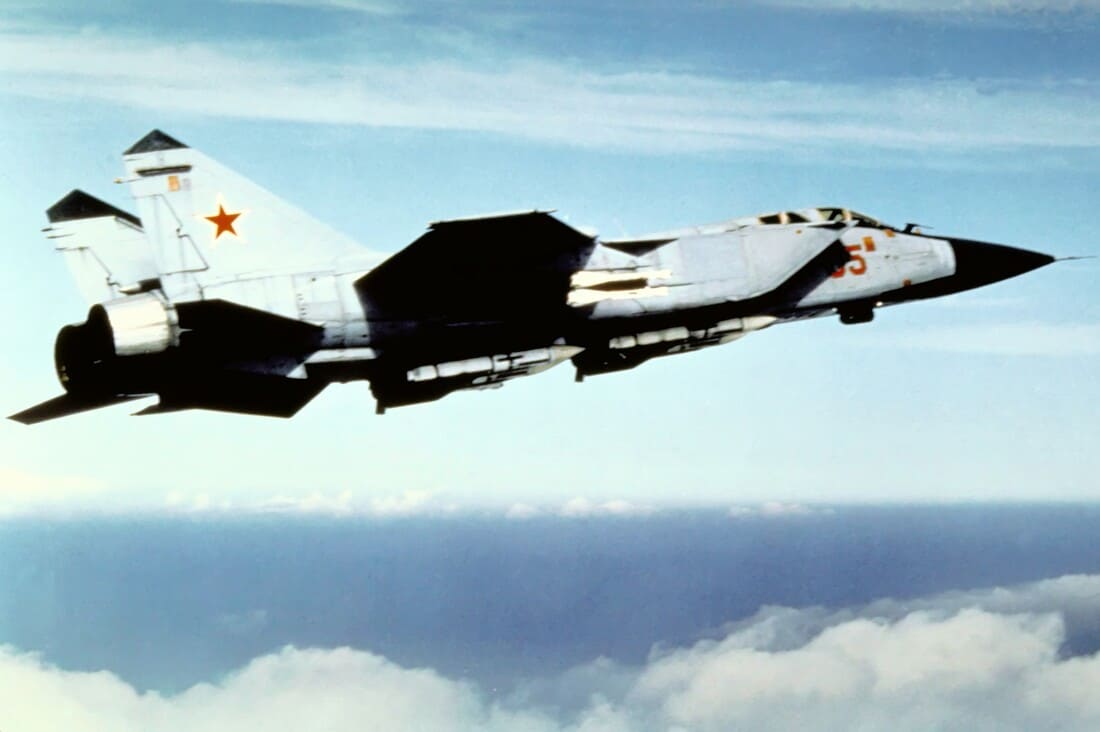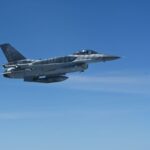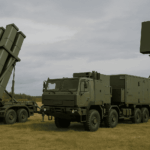Three Russian MiG-31s crossed into Estonian airspace near Vaindloo Island on September 19 and stayed about twelve minutes. Estonian air surveillance tracked them entering from the Gulf of Finland, five nautical miles inside the border at the deepest point, then exiting to the north. No flight plans appeared on file, transponders were off, and there was no two-way radio contact. Defense officials say this was the fourth Russian military airspace breach over Estonia in 2025.
Tallinn issued a formal protest and summoned the Russian chargé d’affaires the same day. The foreign minister, Margus Tsahkna called the episode “unprecedentedly brazen” compared with earlier brief incursions that usually ended within seconds. Estonia’s statement emphasized the duration, the lack of cooperative identification, and the absence of radio calls as factors that raised risk in a crowded corridor where civil traffic and allied training flights operate.
Air policing controllers at Ämari Air Base ordered a Quick Reaction Alert scramble. Two Italian F-35A jets launched under NATO orders and intercepted the Russian formation near the island before the MiG-31s left Estonian airspace. The Russian pilots did not respond to calls on guard frequencies. Regional controllers coordinated with neighboring nations to maintain radar custody as the aircraft moved out.
Vaindloo is a small island near the maritime boundary where traffic to and from the Gulf of Finland funnels past Estonia’s coast. The lane is narrow. Scheduled airways pass over water and allied aircraft use the airspace for training rotations tied to Baltic Air Policing. That geometry leaves little time for judgment errors once an aircraft without a transponder crosses the line. Estonian officials stress the safety hazard as much as the legal breach because civilian aircraft can be in the same area at similar altitudes.
Russian authorities deny any violation and claim their aircraft remained in international airspace while flying to and from bases supporting the Kaliningrad region. That stance has followed most earlier Baltic incidents. Tallinn provided radar plots and timing to allied capitals and to NATO headquarters in Brussels.
NATO air policing response from Ämari with Italian F-35 detachment
The Italian Air Force holds the current rotation at Ämari through late November under the Baltic Air Policing framework, dubbed Baltic Eagle III by Rome. Four F-35A aircraft are on station with personnel from the 32nd Wing. The detachment performs alert duty and training sorties with at least one two-ship on quick launch at all hours. Recent months included several intercepts of Russian military aircraft transiting the Baltic approaches.
Air policing in the Baltic states is a standing allied commitment that dates to 2004. Estonia, Latvia, and Lithuania host allied jets on a rotating basis because their own air forces do not field high-end fighter fleets for continuous duty. Scrambles aim to identify and escort aircraft near or inside NATO airspace, keep flight safety standards and record violations for diplomatic follow-up. Estonia’s rotation history shows Portuguese F-16s and Dutch F-35s earlier this year, with Italy taking over on August 1.
According to industry sources, the current alert posture at Ämari integrates national sensors with NATO’s air command network and pairs the F-35s with ground-based air defense cueing. The jets carry standard beyond-visual-range missiles and an infrared search capability that allows positive identification without relying only on radar returns. The intercept on September 19 followed routine procedure: launch, climb, establish a safe offset, confirm type, record details and pass the tracks to controllers as the aircraft turn away.
MiG-31 aircraft are high-speed interceptors with a large radar and extended range. They often fly along NATO borders in the High North and the Baltic approaches. The jet’s speed compresses reaction timelines for control centers and puts more value on alert posture and procedural discipline.
Article 4 consultations after the Polish drone shootdowns
Estonia requested consultations under Article 4 of the Washington Treaty following the Vaindloo breach. The North Atlantic Council met in Brussels on September 23 and condemned Russia’s actions. Article 4 does not trigger collective defense. It opens a formal channel for members to discuss a threat to a member’s security and consider coordinated measures. The meeting came days after Poland invoked the same article after a wave of Russian drones crossed into its airspace on September 9-10.
The Polish incident moved from warnings to engagements. Allied fighters on rotation joined Polish F-16s and downed several drones. Debris from at least one interceptor fell on a house near Lublin without injuries. The sequence marked the first time during the current war that allied aircraft shot down Russian assets inside NATO territory. That precedent shaped the tone of consultations requested by Tallinn after the MiG-31 episode.
Regional leaders now push to shift from the long-standing “air policing” model to a full air defense posture in the northeast. The arguments focus on rules of engagement, ground-based layers and permanent sensor coverage that can deal with drones as well as fast jets. Proposals include more integrated radar sites, layered command nodes and surge-ready surface-to-air units for the Gulf of Finland corridor. The Latvian president called for that upgrade at the NATO military committee meeting in Riga on September 27.
NATO’s public statements after September 23 underscored deterrence and measured action. Alliance officials backed Estonia’s response and repeated that allied aircraft will intercept and escort intruders while ministers review options. The council’s move to host consultations aimed to close questions about escalation through consensus.
State airspace extends twelve nautical miles from the coastline. Estonia’s radar picture and controller tapes back the claim that the MiG-31 formation crossed the line and stayed well beyond the edge. No civilian controller had two-way voice contact. No transponder codes alerted regional systems or civil traffic.
MI6 warns on Putin’s intent and unveils the Silent Courier portal
On the same date as the Estonian breach, the United Kingdom’s foreign intelligence chief delivered a farewell speech at the British Consulate in Istanbul. He stated there is “absolutely no evidence” that Vladimir Putin wants a negotiated peace in Ukraine short of full Ukrainian capitulation. He said the Kremlin is “stringing us along” and argued that the war has reinforced Ukrainian national resolve rather than broken it. He also said Putin has “bitten off more than he can chew.”
The same speech announced a new MI6 contact method on the dark web named Silent Courier. The portal aims to give potential sources a secure way to reach British intelligence including within Russia. The launch dovetails with a wider allied posture that seeks more insight into Russian military planning, weapon flows and command decision cycles. London described it as a secure channel for sensitive information on terrorism, hostile intelligence activity and threats to European security.
In the Baltic states, governments report more drone overflights, GPS disruption and cyber probing alongside the headline airspace breaches. The Polish case forced a fast operational shift that put allied jets into direct engagements over NATO territory. The Estonian case points to a willingness by Moscow to test borders at pace using fast interceptors.
Estonia’s political leadership stresses predictability. Officials highlighted that the intercept followed standard playbooks, that the protest note carried the legal record and that consultations proceeded through NATO bodies. When an aircraft remains inside for more than a brief slice of time, as happened on September 19, every extra minute increases the risk of a navigation conflict and makes air traffic managers work harder to maintain separation for civil flights.
Operational posture facts relevant to September 19
The current Baltic Air Policing rotation at Ämari runs August through November with Italian F-35A aircraft. The detachment assumed the mission on August 1 after Dutch F-35s and Portuguese F-16s completed their stints.
Italian alert scrambles at Ämari increased in August including a mid-month intercept of Russian aircraft operating close to Baltic airspace.
The September 19 breach and the earlier Polish drone engagements pull the Baltic mission toward a layered air defense model that pairs standing fighter alert with ground-based systems and clearer engagement authorities against small unmanned aircraft as well as fast movers. That shift rests on published consultations, rotation schedules and documented events that forced allied commanders to act within minutes.
The Estonian record on September 19 placed concrete facts on paper. Three specific aircraft types. A defined location near a known island. A measured time span. The response used existing command links and existing aircraft on duty. The legal note followed immediately.
REFERENCE SOURCES
- https://www.gov.uk/government/news/new-dark-web-portal-launched-to-recruit-spies-to-support-uk-security
- https://mil.ee/en/news/russian-federation-aircraft-violated-estonian-airspace/
- https://www.reuters.com/business/aerospace-defense/nato-member-estonia-says-three-russian-jets-violated-its-airspace-2025-09-19/
- https://www.pbs.org/newshour/world/estonia-says-3-russian-fighter-jets-entered-its-airspace-in-brazen-incursion
- https://estonianworld.com/security/chart-shows-russian-jets-12-minute-violation-of-estonian-airspace/
- https://www.justsecurity.org/121527/russia-nato-airspace/
- https://www.nato.int/cps/en/natohq/official_texts_237721.htm
- https://www.nato.int/cps/en/natohq/opinions_237718.htm
- https://www.reuters.com/business/aerospace-defense/latvia-urges-nato-bolster-baltic-air-defence-after-russian-incursions-2025-09-27/
- https://www.reuters.com/world/europe/nato-condemns-russia-estonian-airspace-violation-vows-defend-itself-2025-09-23/
- https://www.reuters.com/business/aerospace-defense/poland-downs-drones-its-airspace-becoming-first-nato-member-fire-during-war-2025-09-10/
- https://www.apnews.com/article/russia-ukraine-war-poland-drones-1232774279039f9e5c5b78bd58686cb9
- https://www.armscontrol.org/act/2025-10/news/nato-downs-russian-drones-over-poland
- https://www.nato.int/cps/en/natohq/opinions_237559.htm
- https://mil.ee/en/air-force/the-amari-air-base/baltic-air-policing-in-amari-airbase/
- https://www.airforce-technology.com/features/inside-nato-air-policing-repsonse-at-amari-air-base/
- https://www.army-technology.com/features/inside-nato-air-policing-repsonse-at-amari-air-base/
- https://theaviationist.com/2025/08/15/italian-f-35-baltic-eagle-iii/
- https://www.aerotime.aero/articles/italian-air-force-f-35a-russia-aircraft-nato
- https://www.gov.uk/government/speeches/speech-by-sir-richard-moore-chief-of-sis-19-september-2025



